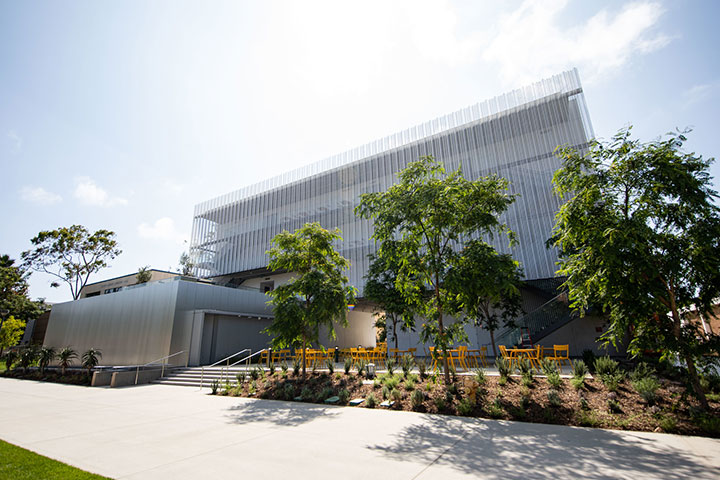Loyola Marymount University remains committed to incorporating sustainability into all newly constructed buildings on campus. All new construction or major renovations must be LEED certified or equivalent. Buildings with a sustainable design offer economic, environmental, and societal benefits. Some of these benefits include healthier, natural light which allow students and employees to perform better and improve overall moods.
What makes it "Green"?

Sustainable Sites
- Construction activity pollution prevention
- implement an erosion and sedimentation control plan
- Site development - protect or restore habitat
- preserve and protect 40% of site from gentrified area from development/construction activity
- restore 30% of the site with native/adapted vegetation
- restore soils in areas that will later serve as the final habitat area
Energy
- Enhanced commissioning
Materials & resources
- Construction & demolition; waste management planning
- develop a C&DWM plan identifying at least 5 materials that will divert from landfill
- provide final diversion report
- recycled and/or salvage nonhazardous C&D materials
- Environmental Product Declarations
- use at least 20 different permanently installed products sourced form at least five different manufacturers that have publicly available EPD's
- use products that comply with one of a USGBC list of environment criteria for 50% of the total value of permanently installed products by cost
- Sourcing of Raw Materials
- use at least 20 different permanently installed products from at least five different manufacturers that have publicly released a resort from their raw material suppliers
- use products that meet at least one of the following criteria: extended producer responsibility, bio based materials, certified wood products, materials reuse, and recycled content
- Material ingredients
- use products that document their material ingredient optimization via Green Screen Benchmark or Cradle to Cradle Certified for at least 25% of the total value of permanently installed products in the project by cost
Indoor environment quality
- Low-emitting materials
- new categories for wall panels, ceiling, insulation, furniture now included
- emission requirements for onsite, wet-applied, full-spread products
- VOC content for the site, wet-applied products
- composite wood CARD ULEF std or NAF
Innovation in design
- green cleaning and integrated pest management
- low mercury lighting
- green building education
- occupant comfort survey
- enhanced cleaning and disinfection policies that meet CDC guidance